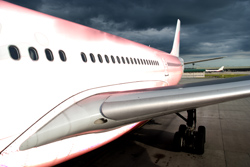Flight of fancy
Upcoming ultra-modern aircraft types, where the wing and the body fuse into each other for better aerodynamics, are called blended wing body (BWB) aircraft. These and other advanced aircraft require special technology to control and fly them seamlessly. The 'Active control for flexible 2020 aircraft' (Acfa 2020) project plans to deliver innovative control equipment (or controllers) for ultra-efficient 2020 aircraft configurations, such as BWB aircraft. These new controllers will be a significant improvement over current technology to deliver a more comfortable ride and handling optimising the load of the aircraft as well. BWB planes are supposed to be lighter, quieter, more aerodynamic and more energy efficient. However, they require complicated control technology – known as multi-channel control architecture - to yield the desired manoeuvres, ensure rigidity and counter vibration. The project aims to apply this advanced technology in these aircraft types, one of which will be a 450-seater commercial aeroplane. The design of such an aircraft with particularly large wings has already been developed in previous initiatives, namely the VELA (Very efficient large aircraft) and NACRE (New aircraft concepts research) projects. The challenge for Acfa 2020lies in applying the innovative control technology to the new passenger BWB planes which feature an ultra-wide body fuselage. The project team aims to identify the best control technology configuration to achieve the highest possible fuel savings. There are also plans to redesign the passenger BWB version to make it lighter and more fuel efficient. In addition, the BWB configuration offers even greater potential for further minimising noise by putting the engine over the rear fuselage or in the airframe and working with the higher wing area/weight ratio, which allows for a simplified high-lift system. These design modifications will also fall under the responsibilities of the Acfa 2020 project. Once these designs and technologies get off the ground, both figuratively and literally, the road to cleaner, quieter and more efficient aircraft will be within reach.







